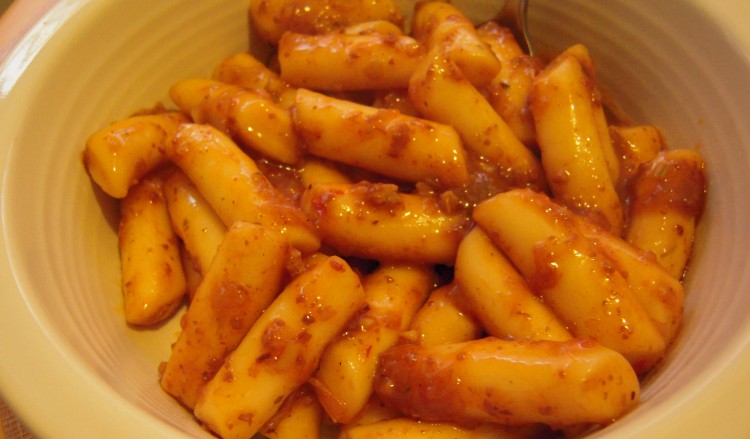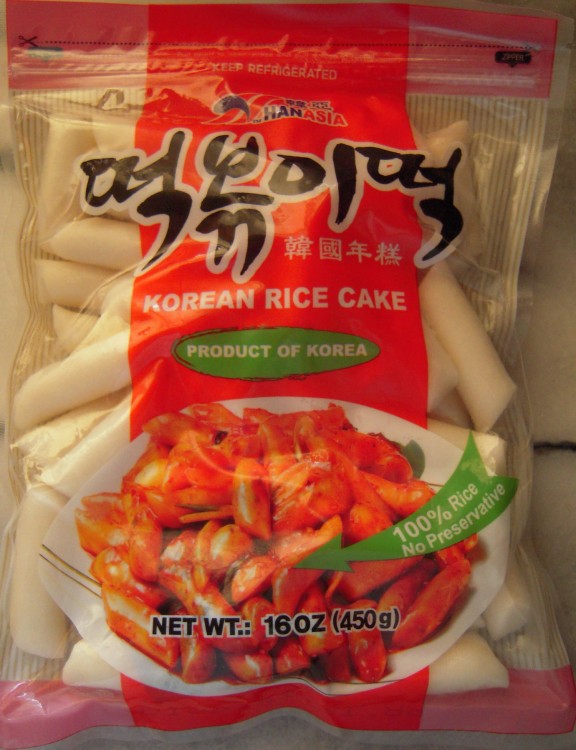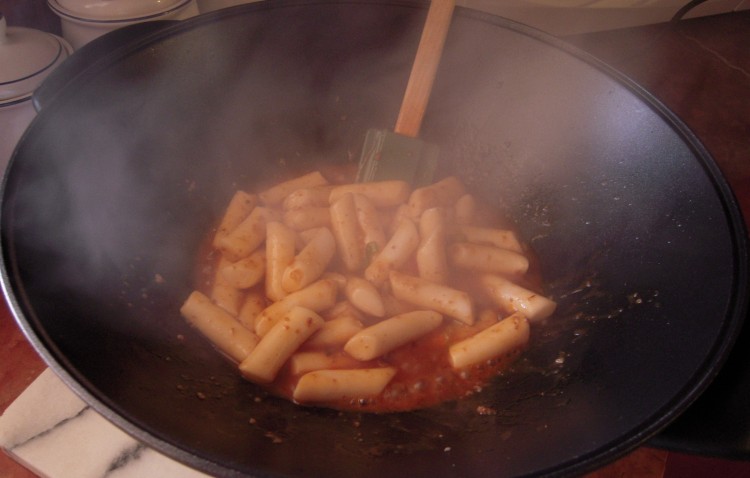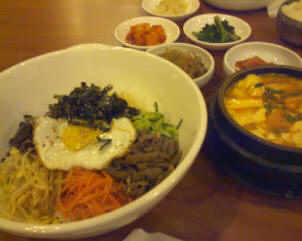
Korean Rice Cakes with XO Sauce
When I visit that Mecca for Asian groceries that is 99 Ranch Market (3288 Pierce Street, Richmond), I usually run into interesting products I haven’t worked with before. Often the item is something I’ve seen on a plate in a restaurant or read about and have been wanting to try my hand at.
Enter a 1-pound bag of Korean rice cakes I found in the refrigerated noodle section.

Korean rice cakes (garaddeok)
Rice cakes, called ddeok, are an integral part of Korean cuisine, and there are numerous kinds. Some are made from glutinous rice, some from non-glutinous, some are sweet, some savory.
A little squeeze of these plain solid tubes through their wrapper told me they’d be like Shanghai rice ovals, namely dense and chewy. Called garaeddeok, they are the main ingredient in ddeokbokki (spicy Korean rice cakes), a popular dish that’s readily available from street vendors. The heat in the dish comes from the addition of a pungent chili paste called gochujang.
I figured I’d follow the directions on the package and deviate as needed based on a little research. Sometimes English instructions on Asian food products are minimal, so it helps to get an elementary grasp of how a noodle or cake is dealt with from a trusted book or blog. For example, it’s good to know about any soaking or pre-cooking requirements.
Advice that was universal: better to undercook than overcook garaeddeok, given that they should be quite chewy when served. Many cooks suggest rinsing and soaking, though this was not mentioned on the package. Most cooking treatments involve a spicy sauce that self-thickens from the starch in the cakes. Check, check and check.
Apparently these commercially prepared and packaged cakes run a far second to fresh ones purchased at rice cake shops in Korea. I believe that. I would imagine the texture suffers in large-scale production.
The bare-bones recipe I developed turns out a tasty dish. Try it and then move up to real ddeokbokki recipes, which I plan on doing now that I have an idea of how garaddeok behave when subjected to heat and liquid.
These rice cakes are very chewy, but give them a try.
Here’s advance warning that you’ll be seeing other dishes inspired by Korean ingredients on the blog. The number of authentic Korean restaurants in the East Bay of late has allowed me to sample a broad range of dishes – not just barbecue or bibimbap, but things like tofu soup – so my interest is at an all-time high.
Korean Rice Cakes with XO Sauce
serves 4 or 5 as a side dish or part of a larger meal
1 pound Korean rice cakes (garaddeok), cut into 2-inch lengths, if purchased whole (and if you get them whole, tell me where you got them!)
2 tablespoons canola oil
2 green onions, chopped (both green and white parts)
3 cloves garlic, finely minced
1-1/2 cups chicken stock or broth
2 tablespoons dark soy sauce
2 tablespoons (or more) XO sauce (buy this seafood-based chili-garlic sauce in Asian markets)
1). Rinse rice cakes and soak them in cold water for 30 minutes
2). Heat oil in a wok (or a heavy, slope-sided cooking vessel); non-stick is a good choice for this dish
3). Saute the green onions and garlic until a bit soft
4). Add chicken stock and soy sauce and bring to a boil
5). Add rice cakes, separating them carefully first if they’re stuck together
6). Cook over high heat for 3 minutes, moving them around regularly so they don’t stick together
7). Add XO sauce and continue to cook as above; if very dry, add a little more stock
8). When sauce thickens sufficiently, turn off heat and serve, but don’t cook them more than another 3 or 4 minutes

Korean rice cakes cooking in wok

